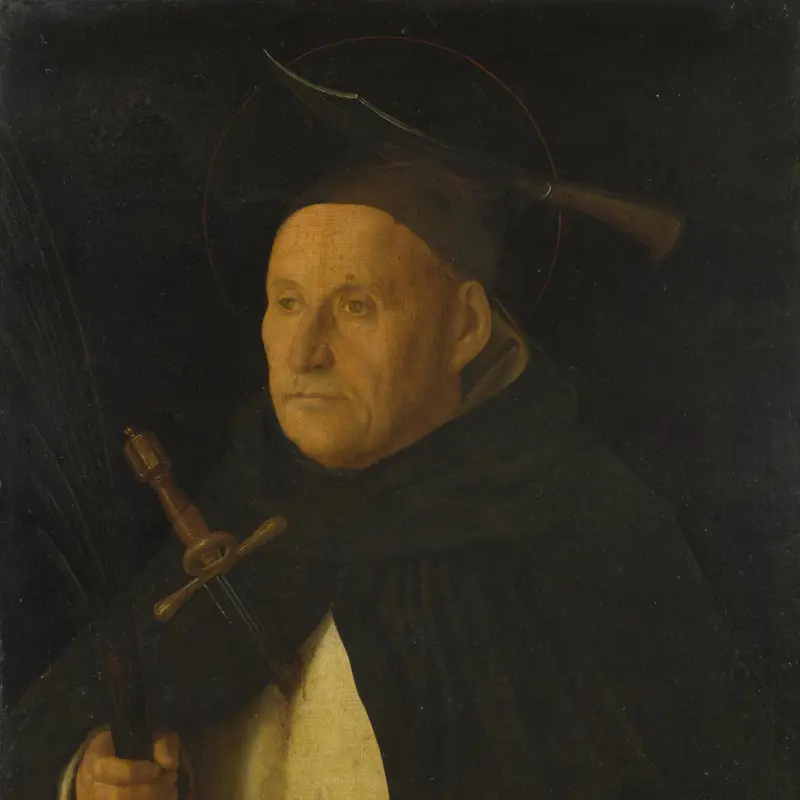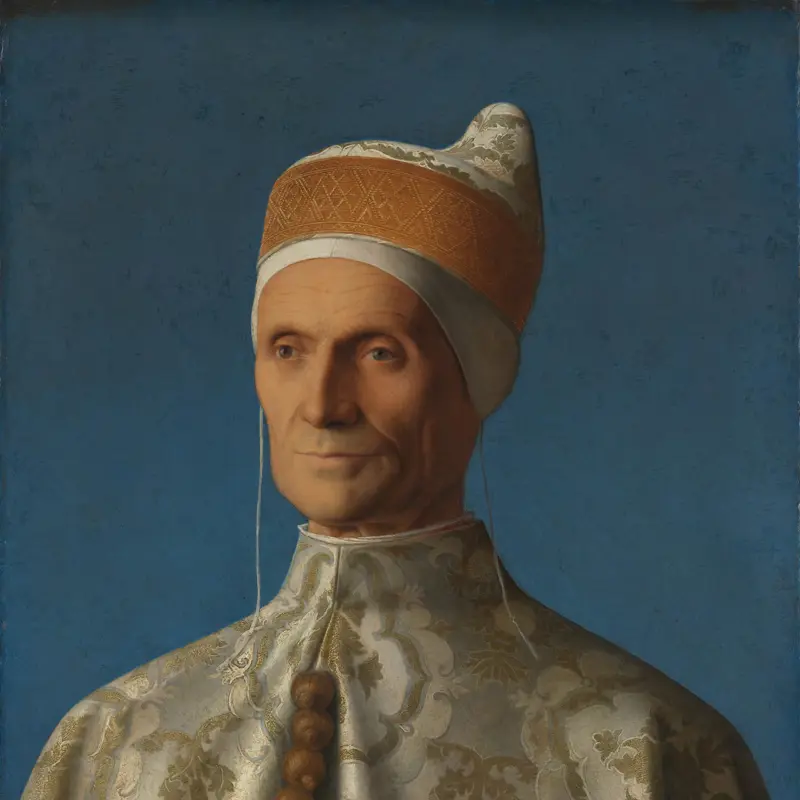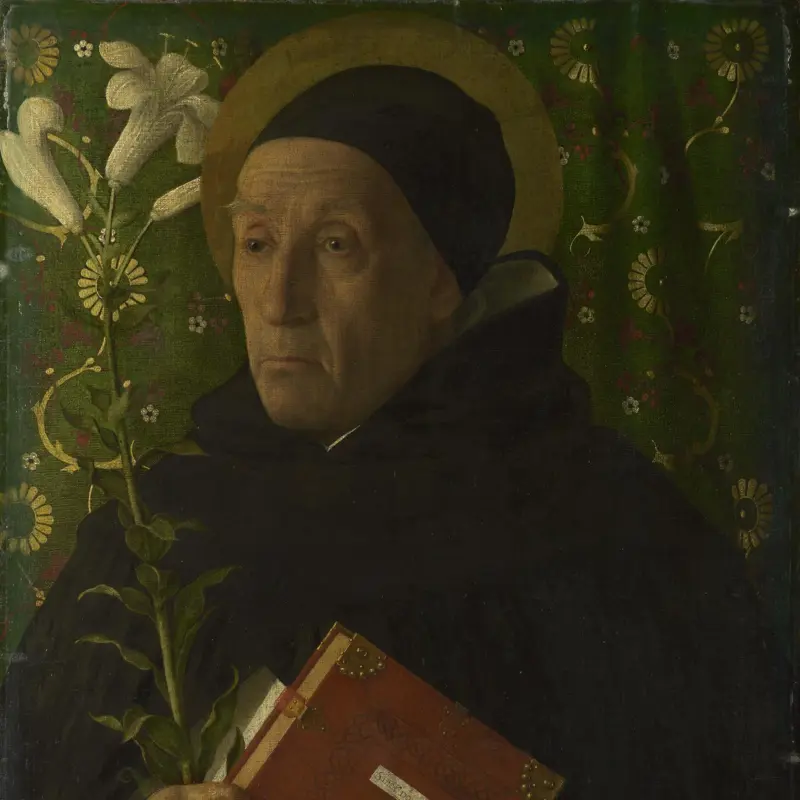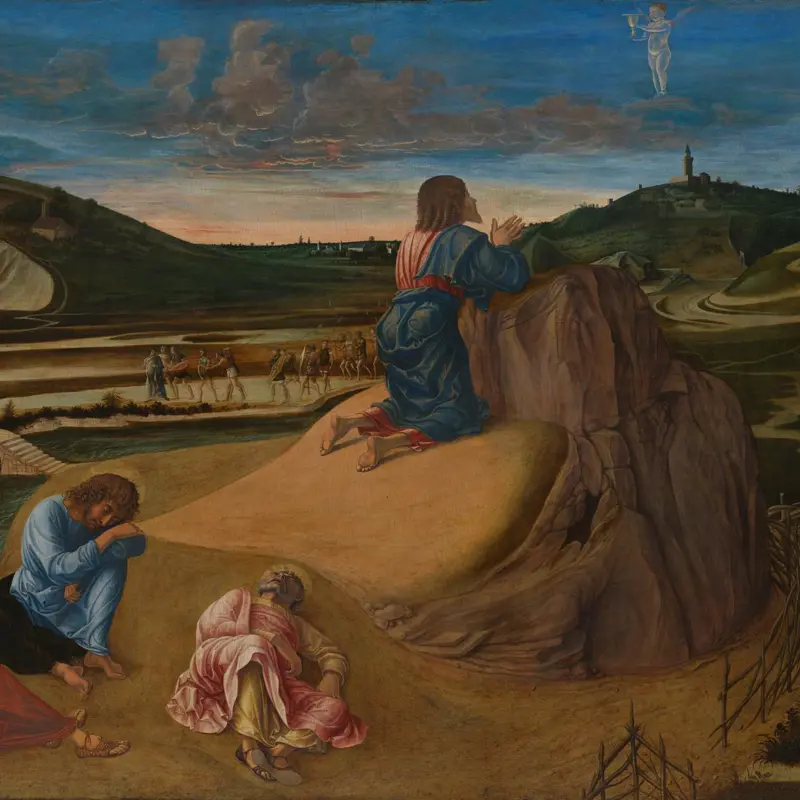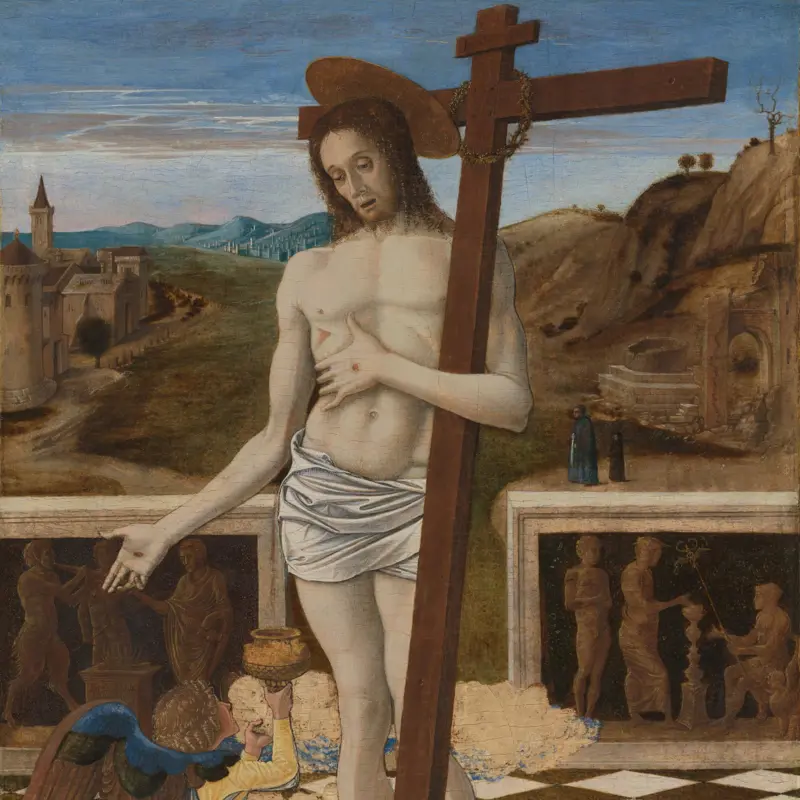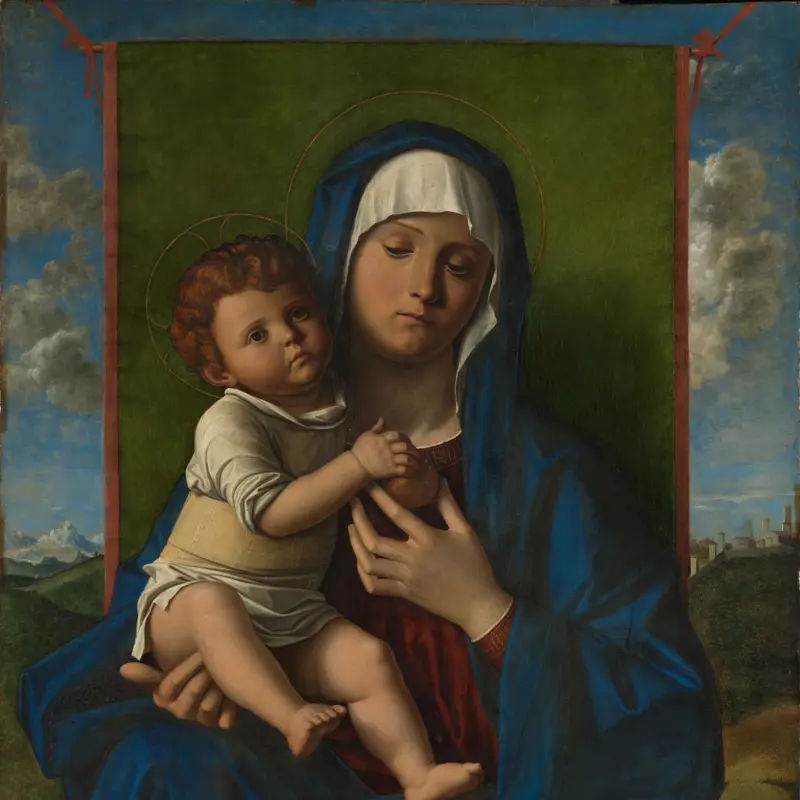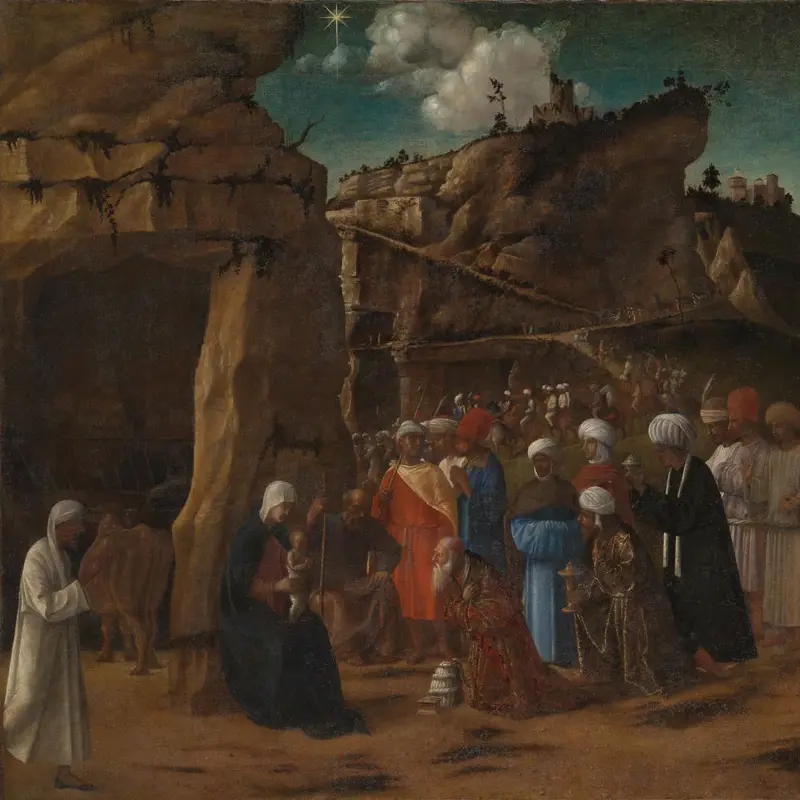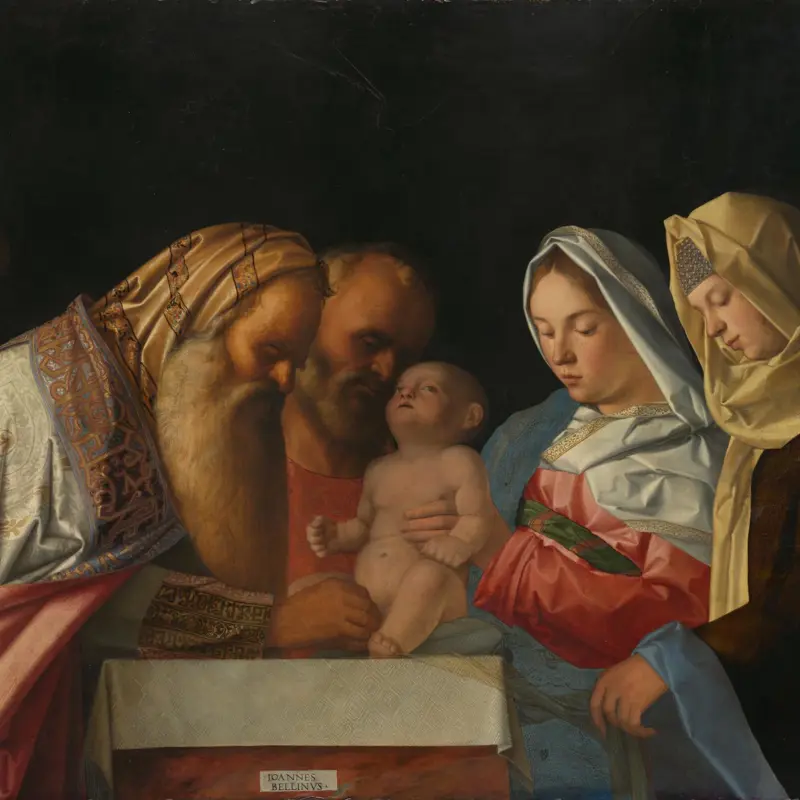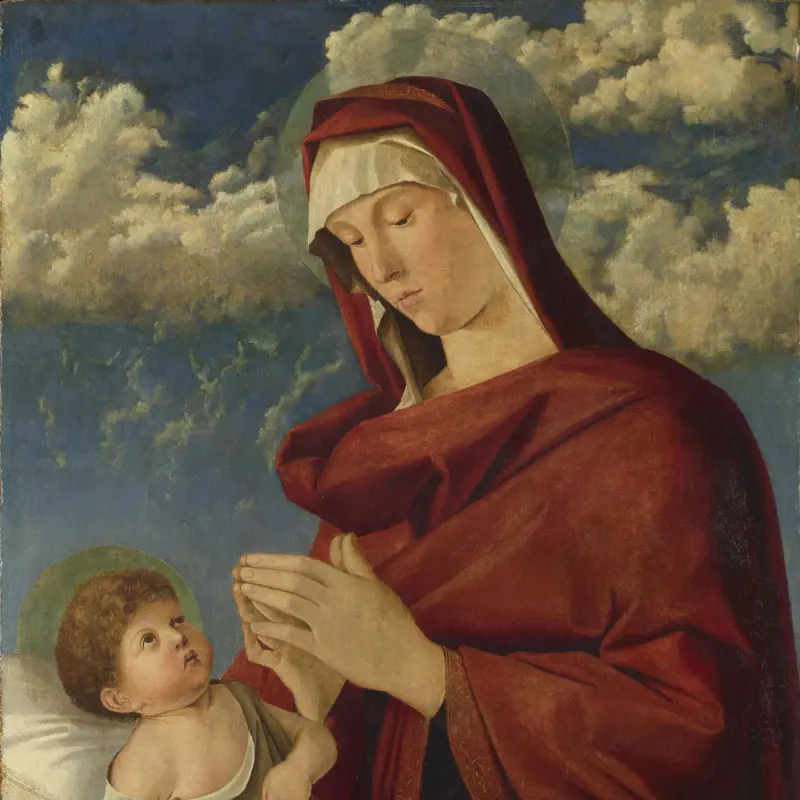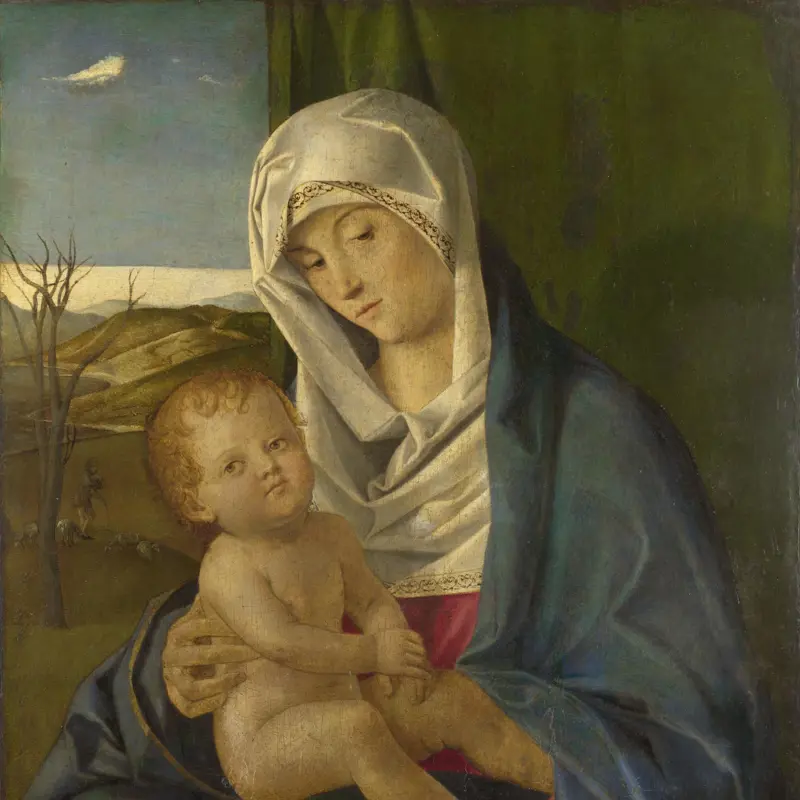Giovanni Bellini, 'The Assassination of Saint Peter Martyr', about 1505-7
About the work
Overview
This scene tells the story of the murder of Saint Peter Martyr, a friar of the Dominican Order who was killed by members of the Cathars, a heretical sect whose teachings he had spoken against publicly. The saint is shown on the left – he has collapsed to his knees, an axe lodged in his skull. His killer makes a final blow to his chest with a dagger.
Until recent cleaning and restoration the picture was covered by layers of varnish which had darkened over time, as well as old repainting. The cleaning revealed the cleaver in the saint’s head, a characteristic feature of images of him. Cleaning also revealed that the dark tree trunks are interspersed with glimmers of bright summer light. This light is perhaps a promise of salvation – Peter’s life and his martyrdom for his faith led to him being declared a saint in 1253.
Key facts
Details
- Full title
- The Assassination of Saint Peter Martyr
- Artist
- Giovanni Bellini
- Artist dates
- about 1435 - 1516
- Date made
- about 1505-7
- Medium and support
- oil on wood
- Dimensions
- 99.7 × 165.1 cm
- Inscription summary
- Signed
- Acquisition credit
- Presented by Lady Eastlake, 1870
- Inventory number
- NG812
- Location
- Room 63
- Collection
- Main Collection
- Previous owners
- Frame
- 21st-century Replica Frame
Provenance
Additional information
Text extracted from the ‘Provenance’ section of the catalogue entry in Martin Davies, ‘National Gallery Catalogues: The Earlier Italian Schools’, London 1986; for further information, see the full catalogue entry.
Exhibition history
-
2012Titian's First Masterpiece: The Flight Into EgyptThe National Gallery (London)4 April 2012 - 19 August 2012
-
2018Mantegna and BelliniThe National Gallery (London)1 October 2018 - 27 January 2019
-
2021The Credit Suisse Exhibition: Dürer's Journeys: Travels of a Renaissance ArtistThe National Gallery (London)20 November 2021 - 27 February 2022
Bibliography
-
1951Davies, Martin, National Gallery Catalogues: The Earlier Italian Schools, London 1951
-
1986Davies, Martin, National Gallery Catalogues: The Earlier Italian Schools, revised edn, London 1986
-
2001
C. Baker and T. Henry, The National Gallery: Complete Illustrated Catalogue, London 2001
About this record
If you know more about this work or have spotted an error, please contact us. Please note that exhibition histories are listed from 2009 onwards. Bibliographies may not be complete; more comprehensive information is available in the National Gallery Library.

